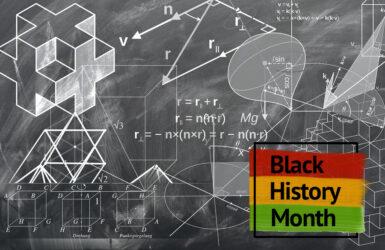Ten lessons from FPM’s Black History Month webinars
Posted on: Tuesday 27 October 2020
Author: Marcia Philbin, Chief Executive, FPM
Each year Black History Month is celebrated across the UK, and for the first time FPM took part by hosting two inspiring webinars. The first webinar was with Dr Nira Chamberlain who spoke about the Black Heroes of Mathematics. Dr Chamberlain himself is the first black President of the Institute of Mathematics and its Applications, and in 2015 was the first black mathematician to appear in Who’s Who (there have been a total of 30 mathematicians who have appeared in Who’s Who). His remarkable story is one of tenacity, creativity, and defying low expectations.
The second webinar was a fireside chat with Dr John Ndikum, a pharmaceutical physician who returned to the NHS to work on the front line in a NHS Trust during the COVID-19 pandemic. Dr Ndikum is also a poet and wrote a specially commissioned poem for FPM based on his experience of working on the frontline.
So, after listening to these two inspiring speakers, I have captured ten key lessons that I have learnt plus a bonus lesson that sums up the importance of Black History Month.
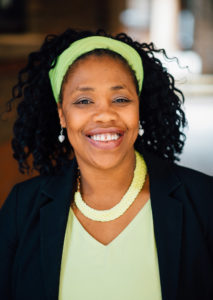
Lesson 1: Windrush Brummies are high achievers!
Dr Chamberlain (like me) is from Birmingham, a child of the Windrush generation, working class and a high achiever. Neither of us have allowed our backgrounds to define us or limit our horizons.
Lesson 2: Children of the Windrush pioneers have common experiences at school.
Before this webinar I had not met Dr Chamberlain or even heard of him. His experience of career teachers at school was just like mine. Racism was rife in the teaching profession when we were growing up and we were judged based on our skin colour rather than on our innate abilities. It is gratifying to know that we have both surpassed those teachers’ low expectations!
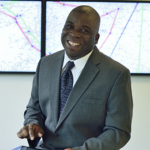
Lesson 3: We only know the information to which we are exposed.
Dr Chamberlain’s research to find black mathematicians highlighted the narrow perspective through which history and science are taught at school. It took the film “Hidden Figures” to expose the significant contribution of black female mathematicians to the US space programme. It is important that children are taught about the diverse innovators, explorers, and trailblazers in order to challenge the misrepresentation of black contribution to science, technology, engineering, and maths as well as the creative industries. I love Queen, The Stereophonics and The Feeling just as much as I love Bob Marley and Beyonce.

Lesson 4: It is up to us as individuals to ensure history does not keep repeating itself.
Dr Chamberlain’s four-year-old son was told by a teacher that he would not be a mathematician but could be a singer instead. Dr Chamberlain realised that the same low expectations that teachers had of him was now being visited on his son, even at the age of 4 years old. (Dr Chamberlain was told to be a boxer). Dr Chamberlain found himself telling his son the same thing that his parents had told him “You do not need anybody’s permission to be a great mathematician”.
Lesson 5: Being your authentic self enables you to thrive.
Dr Ndikum spoke passionately about his poetry and said that, for him, poetry is a compulsion, not a choice. His poetry brings him joy so finding a way to align it with his career as a doctor helps to bring balance to his life. He is a published poet and it was a great honour that he penned a poem specifically for FPM.
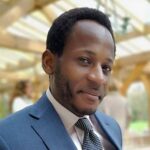
Lesson 6: “Being the first is not something to be proud of but is a calling to ensure you are not the last”.
These words were spoken by Professor Mamokgethi Phakeng, the first black female mathematician in South Africa to get a PhD in maths. Dr Chamberlain has embraced this principle and volunteers for Target Oxbridge where he gives two masterclasses a year to support black children with ambitions to study maths at Oxbridge. In 2019, nine of the eleven children won an Oxbridge place. Dr Chamberlain also started the Black Heroes of Mathematics and children in schools can now learn about hidden figures such as Thomas Fuller (1710-1790) who was an African-born slave in America. He was a prodigious mental calculator despite the fact that he was never taught to read or write. When asked about not being educated, Fuller replied “It is best I got no learning; for many learned men be great fools”.
Dr Ndikum was inspired by Dr Ben Carson’s book “Gifted hands” which has inspired many black children to become doctors. This book is now on my to-read list! Dr Ndikum is also channelling is energy in inspiring the next generation and has established his mentoring business, Zero Entropy, to achieve this.
Lesson 7: Difficult concepts can be taught using nursery rhymes.
Dr Chamberlain used the nursery rhyme “Goldilocks and the three bears” to explain to the Royal Navy commanders how he could design their flagship aircraft carrier, HMS Queen Elizabeth. A plaque dedicated to Dr Chamberlain has been placed on HMS Queen Elizabeth and will remain there for 50 years.
Dr Chamberlain’s creativity demonstrates that maths is not just a mechanical and rule base discipline. To enthuse young people, one must show how maths can be applied to solve pressing real world problems such as predicting whether Aston Villa can stay in the Premier League!
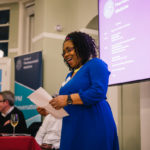
Lesson 8: The public and scientists speak different languages.
Public perception of probability is different to that of scientist! Why? There are two types of probability: frequentist (factual) vs propensity (feelings). The public will communicate about how they feel about the probability of something happening to them if they take part in a clinical trial (propensity) whereas pharmaceutical physicians will focus on frequentist probability, e.g. a clinical trial has a 1 in 5 chance of success. By understanding how participants perceive probability, physicians will become more effective in their communication with them.
Lesson 9: Carpe diem.
During the five years that Dr Ndikum worked in the NHS, he developed an interest for public health. After a night shift, he was walking home when he saw tall chap wearing a cap that said Yale School of Public Health. He stopped him and asked him if he was really from Yale. A long conversation ensued, and the person encouraged Dr Ndikum to apply to Yale. They eventually became great friends, and Dr Ndikum’s application was successful. The moral of the story – seize the moment because it could change your life.
Lesson 10: We need each other.
Dr Ndikum observed that medicine as a career is hierarchal but with the COVID-19 pandemic, hierarchal barriers in his NHS Trust were dissolved and workers became one unit – a group working to keep each other alive. For the first time he felt a true sense of purpose.
Hierarchies are needed to help get things done but they should not define who we are. At the height of the pandemic, the cleaner on the ward was more important because they kept the ward clean. We can accomplish tremendous things working together and during a moment of crisis we have come together to keep each other safe. COVID-19 has been a tragedy for the NHS workers who have died but those who stayed alive, did so because they saw each other’s’ humanity.
The greatest lesson of all: True friendship transcends race, gender and the artificial divides in society.
Dr Ndikum spoke movingly about his mentor who had become a close friend and John had not realised how much his friend meant to him until he died. They came from different races and backgrounds, and had different life experiences, but they were connected through a common interest.
The solution to racism is to find the thing that connect us and elevates us above the limited, myopic frameworks that are there only to keep us apart.
True friendship does not know race, gender or societal structures such as class – personal bonds and solidarity in adversity transcend these divides and helps us to realise our common humanity.
Dr John Ndikum

